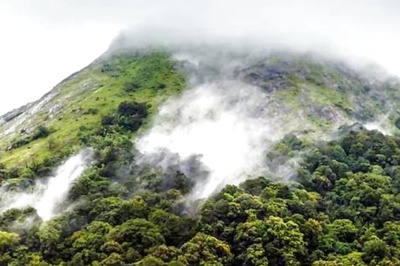
views
CHENNAI: V Dilli sits cross-legged on the floor of his dingy one-room house in Kosapet, patiently rolling out sausage-like lengths of moist clay to be fashioned into miniature Ganeshas. He is one of the many potters in the area who makes these statues ahead of the Vinayaka or Ganesh Chathurthi. The festival, which marks the birthday of Lord Ganesha, is believed to bestow the Lord's blessings on his devotees during the 11-day festival. Pandals are set up all over the city, with different groups vying to have the most innovative design, and the largest statue of Lord Ganesha. On the 11th day, the statues are taken in a procession and are then immersed in the sea or any water body, to symbolise the God’s return to Kailash, where he resides. Earlier, this ritual has had a major environmental impact, as plaster of paris was the preferred material of choice to make these statues. Dilli says, “We use only clay now. Everyone has stopped using Plaster of Paris because of a government order. One load of clay costs `300; we add water, stamp it and then start making our statues.”He makes various sizes of figurines to be immersed by individuals, and hence they are unpainted. Working for 12 hours, he makes 50 of these each day. Prices range from `30 to `100. “In 10 days, I can sell around 500 of these statues. After that, it is time to switch to another job,” says Dilli, as he continues to work on a statue, using nimble fingers to push the clay into a mould. Each Ganesha is made by using two-half moulds and then joining them together, which Dilli does effortlessly.All along the streets of Kosapet, large statues to be kept in the pandals are lined up. These are made of papier-mâché, and come from Andhra Pradesh, Pondicherry and Agaram. Sathyanarayanan, who has been in this business for the past 10 years, says, “We place orders in January and collect them on a cash-andcarry basis. Each load has 25 pieces of various sizes. This year, I have received three loads so far.”Even the paint used on the statues is watercolour, which easily dissolves with minimum impact on the water body where the statue is immersed. “Forget the paint, the whole statue will dissolve if a drop of water falls on it,” he explains, adjusting the large plastic covering that has been given to each of the statues. The statues are anywhere between three and eight feet high, the maximum allowed by the government regulations.What happens if the festival season is over and the statues are not sold? “Even if we incur a loss, we try to sell them off. We can store the small statues and sell them next year. However, for big ones like this, we have no choice but to push and sell it this year,” says Sathyanarayanan, pointing to the biggest statue of the lot.

















Comments
0 comment